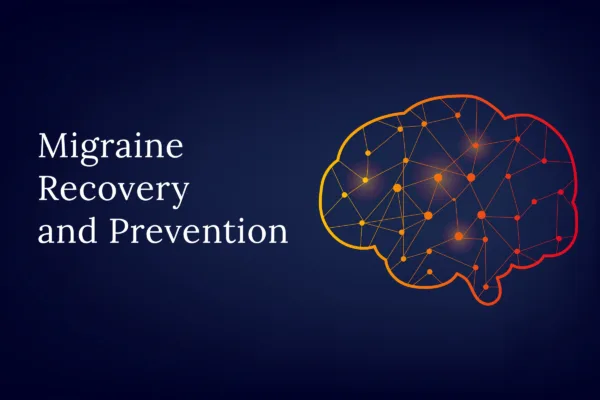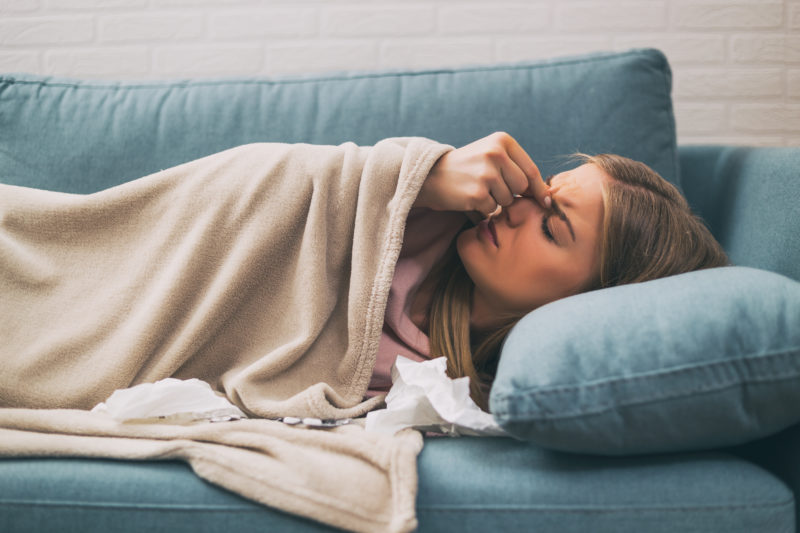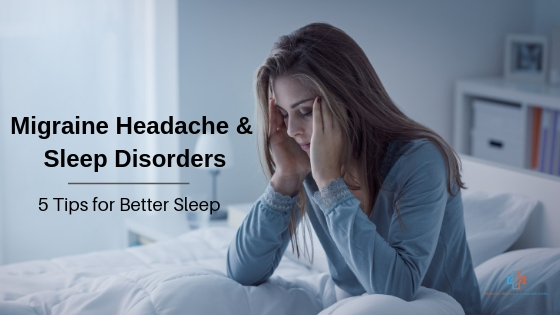Migraines are not ordinary headaches. They often involve pounding or dull pain, nausea, and extreme sensitivity to light and sound. When experiencing a migraine, finding relief becomes a priority.
Natural remedies can help combat migraines without medication. These effective treatments may reduce the duration or severity of migraines and even prevent their occurrence.
However, you should consult your doctor for alternative treatment if the migraine is severe.
1. Lavender Oil
Migraine pain may be eased by inhaling essential lavender oil. A 2012 study showed that people who inhaled lavender oil during a migraine episode experienced relief much faster than those who inhaled a placebo, with relief coming 15 minutes earlier. You can inhale lavender oil directly or apply a diluted form to your temples for potential relief.
2. Acupuncture
Acupuncture offers a natural and effective approach to relieving and preventing migraines. This ancient Chinese practice involves the insertion of fine, sterile needles into specific points on the body, known as acupoints. By regulating neurotransmitters, reducing inflammation, improving blood flow, and modulating pain signals, acupuncture helps to alleviate migraine symptoms and reduce the frequency and severity of attacks.
3. Osteopathic Manual Therapy
Manual osteopathy is a natural remedy for migraines that involves hands-on techniques to diagnose, treat, and prevent pain and dysfunction in the body. This holistic approach focuses on the musculoskeletal system, including bones, muscles, and joints, as well as the body’s overall structure and function.
How Manual Osteopathy Works
Osteopathic practitioners use a variety of techniques to:
- Improve Alignment: Gentle manipulations and adjustments help realign the spine and other joints, which can relieve pressure on nerves and reduce migraine triggers.
- Enhance Circulation: Techniques that promote better blood flow can reduce the frequency and intensity of migraines by ensuring that the brain and surrounding tissues receive adequate oxygen and nutrients.
- Reduce Muscle Tension: By addressing tightness and imbalances in the muscles, particularly those in the neck and shoulders, manual osteopathy can alleviate common sources of migraine pain.
- Promote Nervous System Function: Techniques aimed at optimizing the function of the nervous system can help prevent the misfiring of pain signals that lead to migraines.
Benefits of Manual Osteopathy for Migraines
- Non-Invasive Treatment: Manual osteopathy offers a drug-free, hands-on approach to managing migraines.
- Personalized Care: Treatment plans are tailored to the individual’s specific needs, addressing underlying causes of migraines.
- Holistic Approach: Osteopathy considers the whole body, aiming to improve overall health and well-being, which can have a positive impact on migraine prevention and relief.
- Complementary Therapy: It can be used alongside other treatments, such as medication or physical therapy, for a comprehensive approach to migraine management.
Manual osteopathy provides a gentle and natural method for managing migraines, focusing on restoring balance and function to the body. By addressing the root causes of migraine pain, it offers a potential long-term solution for those seeking alternative and holistic treatments.
4. Peppermint Oil
Peppermint oil is a popular natural remedy for migraines due to its soothing and analgesic properties. Derived from the peppermint plant, this essential oil contains menthol, which helps relax muscles and ease pain. When applied topically to the temples, forehead, or neck, peppermint oil can provide a cooling sensation that reduces headache intensity and alleviates associated symptoms like nausea and sensitivity to light.
A 2010 study shows that the menthol in peppermint oil also promotes blood flow and has anti-inflammatory effects, which can further help in reducing migraine discomfort. Inhaling peppermint oil vapor or using it in aromatherapy can also provide relief by calming the nervous system and reducing stress, which are common migraine triggers.
Overall, peppermint oil offers a natural, non-invasive option for managing migraines, providing both immediate and long-lasting relief when used appropriately.
5. Ginger
Ginger is a well-known natural remedy for migraines, celebrated for its anti-inflammatory, antioxidant, and pain-relieving properties. This versatile root can be consumed in various forms, such as fresh, dried, powdered, or as an extract. It is particularly effective in reducing migraine symptoms like nausea and vomiting, which often accompany severe headaches.
Ginger works by inhibiting the production of prostaglandins, which are chemicals in the body that promote inflammation, pain, and muscle contractions. By reducing these prostaglandins, ginger can help alleviate the intensity and duration of migraine attacks. Additionally, ginger has compounds that can relax blood vessels, reduce inflammation, and counteract oxidative stress, all of which contribute to migraine relief.
For those experiencing migraines, ginger can be consumed as a tea, taken in capsule form, or added to meals. Some people find relief by simply chewing on a small piece of fresh ginger. Overall, ginger provides a natural, accessible, and effective option for managing and preventing migraines, offering a holistic approach to pain relief.
6. Yoga
Yoga is an effective natural remedy for migraines, offering a holistic approach to managing and preventing headache episodes. This ancient practice combines physical postures, breathing exercises, and meditation to promote overall well-being and reduce stress, a common trigger for migraines.
Studies have shown that regular yoga helps improve circulation, reduce muscle tension, and enhance relaxation. Specific yoga poses, such as child’s pose, bridge pose, and legs-up-the-wall pose, can help alleviate migraine symptoms by releasing tension in the neck, shoulders, and back, areas often associated with headache pain.
Additionally, yoga’s emphasis on deep, mindful breathing can improve oxygen flow to the brain, further reducing headache intensity. The meditative aspects of yoga encourage mental calmness and emotional balance, which can help prevent migraines by reducing anxiety and stress levels.
Overall, yoga provides a natural, non-invasive, and holistic way to manage migraines, promoting both physical and mental health. Regular practice can lead to fewer and less severe migraine attacks, enhancing quality of life for those who suffer from this condition.
Biofeedback
Biofeedback is a natural remedy for migraines that involves using real-time monitoring devices to help individuals gain control over certain physiological functions that can contribute to headaches. This technique focuses on teaching patients to regulate bodily processes such as muscle tension, heart rate, and skin temperature, which can influence the onset and severity of migraines.
During a biofeedback session, sensors are attached to the skin to measure physiological responses, which are then displayed on a monitor. With the guidance of a trained therapist, patients learn to recognize the signs of physical stress and implement relaxation techniques to counteract them. These techniques might include deep breathing, progressive muscle relaxation, or guided imagery.
By practicing biofeedback, individuals can learn to reduce muscle tension and stress, two common migraine triggers. Over time, this can lead to fewer migraine episodes and less intense pain. Biofeedback also empowers patients by giving them the tools to manage their migraines proactively, without relying solely on medications.
Magnesium
Magnesium is a natural remedy for migraines, valued for its role in numerous bodily functions, including muscle and nerve function, blood sugar control, and the regulation of blood pressure. Research suggests that magnesium deficiency may be linked to the onset of migraines, and supplementing with magnesium can help prevent and alleviate migraine symptoms.
Magnesium works by:
- Regulating Neurotransmitters: It helps balance neurotransmitters in the brain, which can reduce the occurrence of migraines.
- Preventing Blood Vessel Constriction: Magnesium can prevent the narrowing of blood vessels in the brain, a common trigger for migraine headaches.
- Reducing Inflammation: It has anti-inflammatory properties that can help lower the inflammation associated with migraine pain.
- Improving Sleep: Adequate magnesium levels can enhance sleep quality, which is crucial since poor sleep is a known migraine trigger.
Common sources of magnesium include leafy green vegetables, nuts, seeds, whole grains, and supplements. For those prone to migraines, incorporating these foods into their diet or taking magnesium supplements can help reduce the frequency and severity of migraine attacks.
Overall, magnesium offers a safe, natural, and effective approach to managing migraines, with additional benefits for overall health and well-being.
Conclusion
Natural remedies offer a diverse array of options for treating migraine symptoms, providing holistic and often non-invasive alternatives to conventional medications. From acupuncture and biofeedback to the use of peppermint oil, ginger, magnesium, and manual osteopathy, these treatments can effectively alleviate pain, reduce the frequency of migraine attacks, and improve overall well-being.
By incorporating these natural approaches into a comprehensive migraine management plan, individuals can achieve significant relief and a better quality of life. Always consult with a healthcare professional to determine the best combination of treatments tailored to your specific needs and medical history.
Allais, G., Rolando, S., Gabellari, I. C., Burzio, C., Airola, G., Borgogno, P. … Benedetto, C. (2012, May). Acupressure in the control of migraine-associated nausea. Neurological Sciences, 33(1), 207-210
link.springer.com/article/10.1007%2Fs10072-012-1069-y
Borhani Haghighi, A., Motazedian, S., Rezaii, R., Mohammadi, F., Salarian, L., Pourmokhtari, M. … Miri, R. (2010). Cutaneous application of menthol 10% solution as an abortive treatment of migraine without aura: a randomized, double-blind, placebo-controlled, cross-over study. International Journal of Clinical Practice, 64(4), 451-456
ncbi.nlm.nih.gov/pubmed/20456191
Boroujeni, M. Z., Marandi, S. M., Esfarjani, F., Sattar, M., Shaygannejad, V., & Javanmard, S. H. (2015). Yoga intervention on blood NO in female migraineurs. Advanced Biomedical Research, 4, 259
ncbi.nlm.nih.gov/pmc/articles/PMC4746941/
Headaches and food. (n.d.)
my.clevelandclinic.org/health/articles/headaches-and-food
Lawlor, S. P., & Cameron, L. D. (2006, August). A randomized, controlled trial of massage therapy as a treatment for migraine [Abstract]. Annals of Behavioral Medicine, 32(1), 50-59
ncbi.nlm.nih.gov/pubmed/16827629
Lee, J. S., Lee, M. S., Min, K., Lew, J. H., & Lee B. J. (2011, August). Acupressure for treating neurological disorders: A systematic review [Abstract]. The International Journal of Neuroscience, 121(8), 409-414
ncbi.nlm.nih.gov/pubmed/21545308
Maghbooli, M., Golipour, F., Moghimi Esfandabadi, A., & Yousefi, M. (2014). Comparison between the efficacy of ginger and sumatriptan in the ablative treatment of the common migraine [Abstract]. Phytotherapy Research, 28(3), 412-415
ncbi.nlm.nih.gov/pubmed/23657930
Magnesium rich foods.
https://my.clevelandclinic.org/health/articles/15650-magnesium-rich-food
Migraine facts. (n.d.)
migraineresearchfoundation.org/about-migraine/migraine-facts/
Pittler, M. H., & Ernst, E. (2004). Feverfew for preventing migraine [Abstract]. Cochrane Database of Systematic Reviews, 1
ncbi.nlm.nih.gov/pubmed/14973986
Sassanejad, P., Saeedi, M., Shoeibi, A., Gorji, A., Abbasi, M., & Fouroughipour, M. (2012). Lavender essential oil in the treatment of migraine headache; a placebo-controlled clinical trial [Abstract]. European Neurology, 67, 288-291
karger.com/Article/Abstract/335249


















